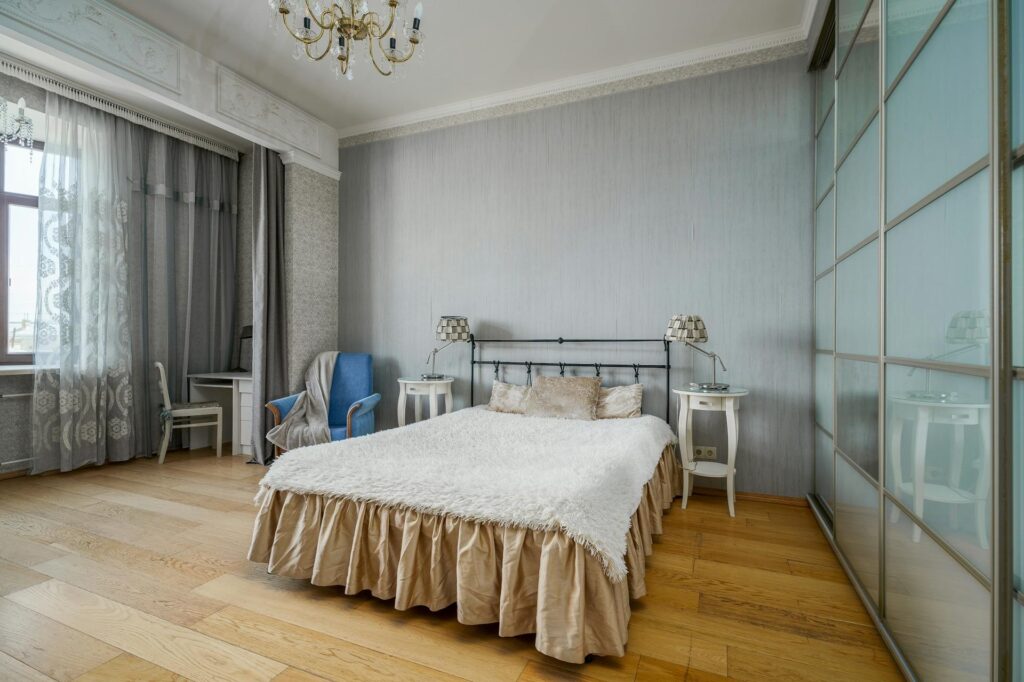Anyone who has ever moved houses knows how stressful the experience can be, but the challenge goes up a level when you have to deal with Louisville’s humid summers during the process. However, this is the time you need to see that silver lining. This period of transition offers a unique opportunity to embrace minimalism in your new living space. Minimalism is more than just a trend—it’s a practical lifestyle choice, especially beneficial for renters who may need to relocate frequently. Adopting minimalist décor can make your home look modern, spacious, and organized, creating a calming environment amidst the chaos of everyday life.
We’ll start these tips with a little pre-move task.
1. Declutter Before You Move
Before you start packing, take some time to evaluate your belongings. Decluttering is an essential first step in adopting a minimalist lifestyle. Begin by identifying items that no longer serve a purpose or that take up unnecessary space. This might include old furniture, clothes you no longer wear, or kitchen gadgets you haven’t used in years. By removing these items, you can reduce the amount of stuff you need to move, which can lower your moving costs.
If there are items you’re not ready to part with but don’t need immediately, consider renting a climate-controlled storage unit. Louisville’s humidity can be harsh on furniture, electronics, and other sensitive items, so storing them properly is crucial. Additionally, by reducing the number of items you need to move, you can allocate more of your budget toward hiring a top-notch Louisville moving company, ensuring that the packing, transportation, and unloading are handled professionally.
2. Start with a Blank Canvas
Once you’ve moved into your new home, you must understand that not every space needs to be filled right away. Start with a blank canvas. Get used to the space and assess it carefully before making any major decorating decisions. This approach helps you understand the flow of the home and what it truly needs, rather than rushing to fill empty spaces with unnecessary items.
By starting with the basics—such as essential furniture and appliances—you can gradually add pieces that serve a purpose and enhance the overall aesthetic. This method also prevents the common mistake of overloading a new space with décor that may not be needed or appreciated.
3. Focus on Functionality
In a minimalist home, every item should serve a purpose. When choosing furniture and décor, prioritize functionality. Opt for multi-functional pieces that can help you make the most of your space. For example, select a coffee table that can also be used for storage purposes or opt for a sofa bed that can be used when guests come over.
This focus on functionality not only saves space but also ensures that your home remains clutter-free. Each piece of furniture should add value to your life, either through its practicality or its ability to enhance the comfort of your living space.
4. Embrace Neutral Colors
Neutral colors are a staple of minimalist design. Sticking to a neutral palette—such as whites, grays, and beiges—can make your home feel larger and more cohesive. These colors provide a calm and serene backdrop, allowing the space to breathe and avoiding the visual clutter that can come with bold or varied hues.
Neutral tones also make it easier to mix and match different pieces of furniture and décor without overwhelming the space. This approach contributes to a more modern and sophisticated look, which is at the heart of minimalist design.
5. Keep Décor Simple
When it comes to decorating your new home with a minimalistic approach, remember the “less is more” mantra. Choose décor that has personal significance or adds to the overall aesthetic without dominating the room.
This simplicity in decoration ensures that your home feels open and airy. It also reduces the time and effort needed to maintain your space, as there are fewer items to dust, clean, or rearrange.
6. Invest in Quality over Quantity
When furnishing your minimalist home, it’s important to prioritize quality over quantity. Instead of filling your space with numerous items, focus on acquiring a few well-made, durable pieces that will stand the test of time. Investing in quality furniture and essentials might initially seem more expensive, but it pays off in the long run as these items tend to last longer and maintain their appeal.
High-quality pieces also add a touch of sophistication to your home, making it feel more intentional and curated. Whether it’s a sturdy dining table, a comfortable sofa, or durable kitchenware, choosing well-made items ensures that your space remains functional and stylish without the need for frequent replacements.
7. Use Natural Light
Natural light is a key element in minimalist design, as it enhances the openness and airiness of a space. To maximize the natural light in your home, keep window treatments simple. Light, sheer curtains, or blinds can allow sunlight to filter in, making your rooms feel brighter and more inviting. If you need to upgrade your window treatments, consider options to buy blind designs that are both functional and minimalistic.
Positioning mirrors strategically can also help reflect natural light, further brightening the space and creating the illusion of a larger area. By letting natural light take center stage, you can reduce the need for excessive artificial lighting, which aligns with the minimalist principle of simplicity and efficiency.
8. Create a Capsule Wardrobe
If your new home has limited closet space, consider adopting a capsule wardrobe. A capsule wardrobe comprises a few carefully selected pieces of versatile clothing items that you can mix and match to create diverse outfits. This way, you’ll save space while simplifying your daily routine. How? Think about it. Having a few key pieces will reduce the fatigue associated with deciding what to wear every day.
To create a capsule wardrobe, start by selecting essential items in neutral colors that can be easily paired with one another. Focus on quality and comfort, choosing pieces that can be worn in different settings, from casual to formal. By curating a minimalist wardrobe, you not only save space but also cultivate a more intentional and thoughtful approach to fashion.
Less is More Peaceful
Embracing minimalism in your new home after a move can lead to a more organized, peaceful, and aesthetically pleasing living environment. By adopting a minimalist approach in your new home, you’re not just decorating; you’re setting the stage for a lifestyle that prioritizes what truly matters. As you settle into your new space, let minimalism guide you toward a more mindful and fulfilling way of living, where every item has its place and every space serves to enhance your well-being.







